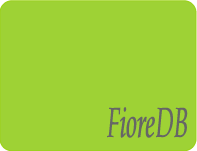| Alias |
|
| TF Classification |
|
| TAIR short description |
zinc finger (C2H2 type) family protein (.1) |
| TAIR annotation |
zinc finger (C2H2 type) family protein; FUNCTIONS IN: zinc ion binding, nucleic acid binding; INVOLVED IN: biological_process unknown; LOCATED IN: intracellular; EXPRESSED IN: 23 plant structures; EXPRESSED DURING: 13 growth stages; CONTAINS InterPro DOMAIN/s: Zinc finger, C2H2-like (InterPro:IPR015880), Zinc finger, U1-type (InterPro:IPR003604), Zinc finger, C2H2-type (InterPro:IPR007087), Zinc finger, double-stranded RNA binding (InterPro:IPR022755); Has 726 Blast hits to 418 proteins in 208 species: Archae - 0; Bacteria - 0; Metazoa - 301; Fungi - 225; Plants - 112; Viruses - 0; Other Eukaryotes - 88 (source: NCBI BLink). (.1) |
| Gene model |
|
| Entry clone (w/o stop) |
|
| External link |
|
| Gene Ontology (GO) |
| (F) 3676: nucleic acid binding |
->nucleic acid binding |
| (F) 8270: other binding |
->zinc ion binding |
|
| miRNA/tasiRNA |
|
| Orthologs |
|
Type |
| Ia |
Ib |
II |
III |
Total |
| poplar |
1 |
|
1 |
|
2 |
| soybean |
1 |
|
1 |
|
2 |
| rice |
1 |
|
|
|
1 |
| sorghum |
1 |
|
|
|
1 |
| physcomitrella |
|
1 |
|
|
1 |
| Total |
4 |
1 |
2 |
|
7 |
|
| Repression motif |
|
Repression motif
in putative orthologs |
|
| Status |
| Plasmid construction | -> done |
| Plasmid construction | -> done |
| Transformed | -> done |
| T1 seed harvested | -> done |
| T2 seed harvested | -> done |
|
| CRES-T phenotype from individual project
|
|
| CRES-T phenotype from publication |
|
| CRES-T phenotype from bulk project |
|
Phenotype in ornamental plants
|
|
| Comment |
|
